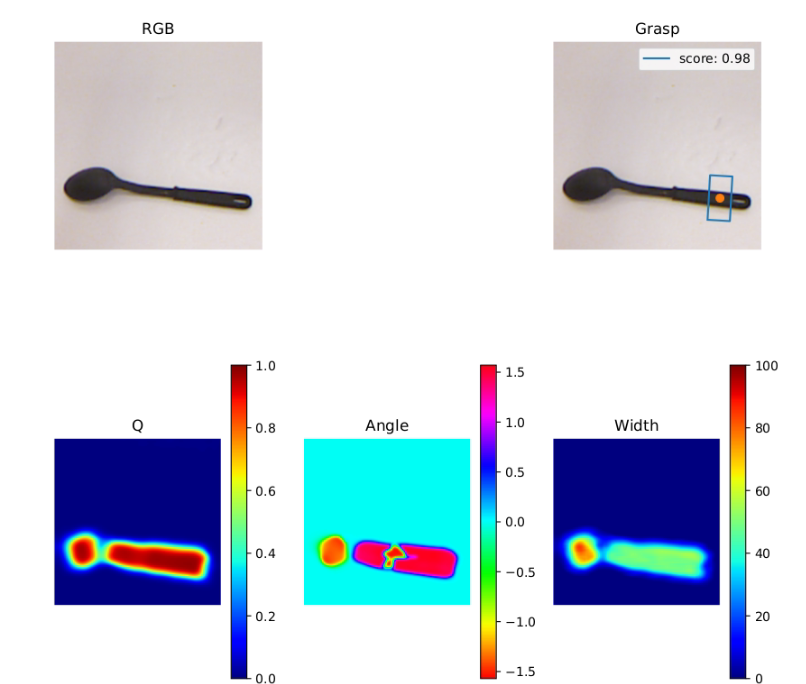Code for our paper "Generative model based robotic grasp pose prediction with limited dataset"
Article Link: Springer
In our work we present a lightweight approach to perform grasp operation for robots. We propose 2 models in our paper:
1."GI-NNet" - A supervised learning approach employing combination of ResNet and Inception Net.
2."RGI-NNet" - A semi-supervised approach for grasp prediction, using combination of GI-NNet and VQ-VAE.
- Train GI-NNet model
python train_network_ginnet.py --dataset cornell --dataset-path <path_to_dataset_folder> --description run --num-workers 4
- Eval GI-NNet model
python evaluate.py --network <path_to_saved_network> --dataset cornell --dataset-path <path_to_dataset_folder> --iou-eval --num-workers 4
- Train RGI-NNet model
python train_network_vq_vae_rginnet.py --dataset cornell --dataset-path <path_to_dataset_folder> --description run --num-workers 4
- Eval RGI-NNet model
python evaluate_vq_vae.py --network <path_to_saved_netowrk> --dataset cornell --dataset-path <path_to_dataset_folder> --iou-eval --num-workers 4
Shukla, P., Pramanik, N., Mehta, D., & Nandi, G.C. Generative model based
robotic grasp pose prediction with limited dataset. Applied Intelligence (2022).
https://doi.org/10.1007/s10489-021-03011-z
